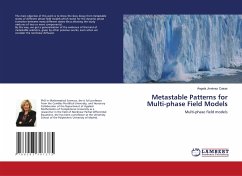Please note that the content of this book primarily consists of articles available from Wikipedia or other free sources online. A phase field model is a mathematical model for solving interfacial problems. It has mainly been applied to solidification dynamics, but it has also been applied to other situations such as viscous fingering, fracture dynamics, vesicle dynamics, etc. The method substitutes boundary conditions at the interface by a partial differential equation for the evolution of an auxiliary field (the phase field) that takes the role of an order parameter. This phase field takes two distinct values (for instance +1 and 1) in each of the phases, with a smooth change between both values in the zone around the interface, which is then diffuse with a finite width. The location of points where the phase field takes a given value corresponds to the position of the interface. The model is usually constructed in such a way that in the limit of small interface width (the so-called sharp interface limit) the correct interfacial dynamics is recovered. This approach permits to solve the problem by integrating a set of partial differential equations for all the system, thus avoiding the explicit treatment of the boundary conditions at the interface.
Bitte wählen Sie Ihr Anliegen aus.
Rechnungen
Retourenschein anfordern
Bestellstatus
Storno








